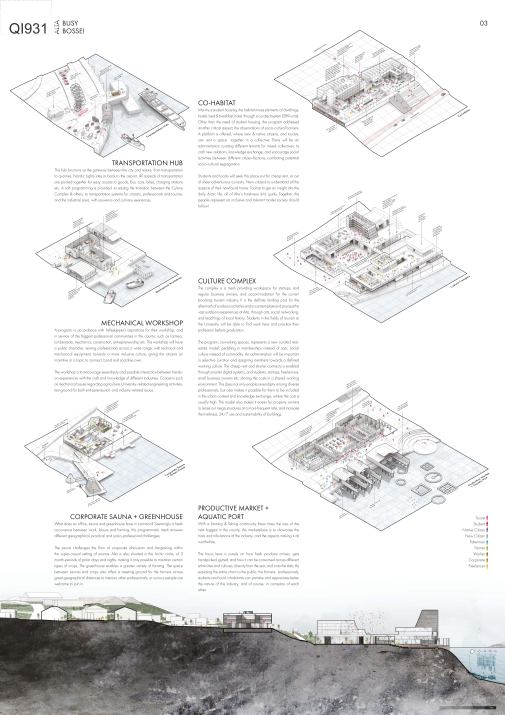Project:
BUSY BOSSE!
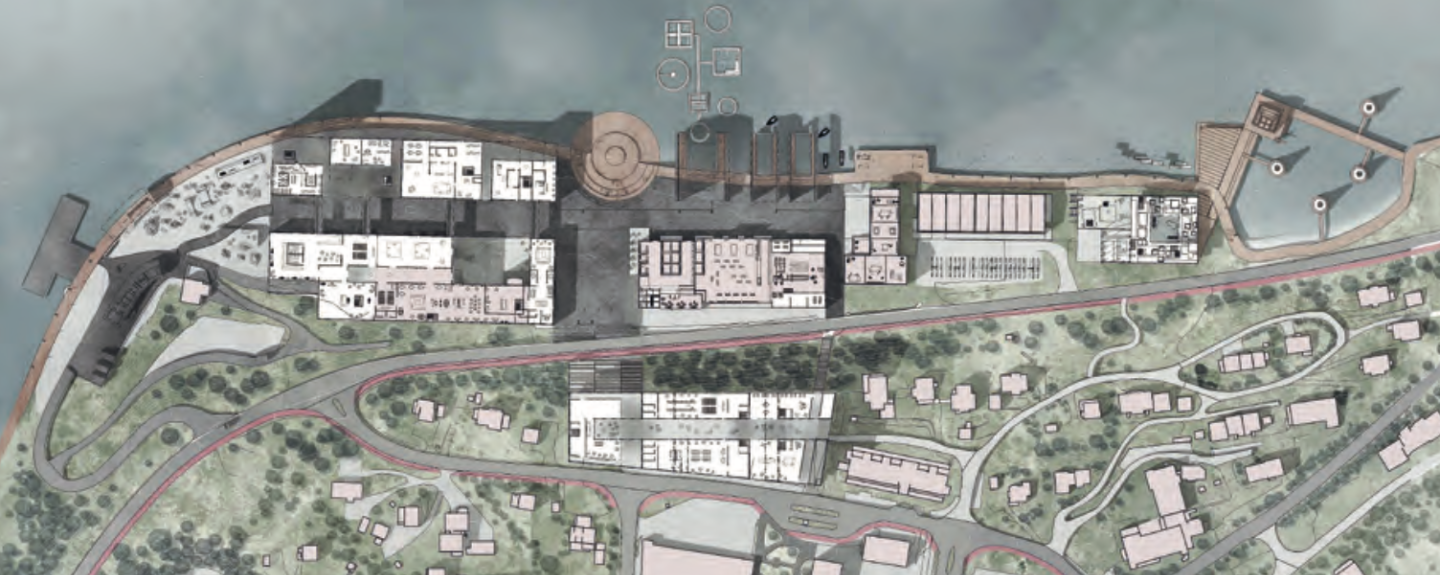
About
-
The site Bossekop, Alta, represents the current trend of traditional production being relocated from urban, to desolate areas, leaving behind a clean slate for transformation. With this relocation, are we in fact, at risk of losing urban qualities, intrinsic to production only; such as social networks, working cultures, or knowledge exchange between professionals?
This entry examines the importance of human interactions and networks that comes with a diverse productive/industrial foundation, from scattered across great geographical distances. Bossekop harbor front is perceived as a converging meeting ground for cross-cultural understanding, between professionals, tourists, and new and native citizens alike. It also intentionally engages in the socio-cultural aspects of the theme, productive cities, and stresses its importance, the question is why?
Cities compete against each other, more now than ever, in terms of attracting/maintaining human capital towards more productive cities. In the pursuit of a more productive/prestigious society, one has to ask; does great empires arise from grand facilities, stellar harbor front developments, elaborate tourism infrastructure, or even the numbers of employment rates on knowledge workers?
We conclude on the same note as renowned scholars on the foremost productive communities, such as Castells, Porter, Florida etc. Yes, all of the aforementioned aspects are important. Yet, it is the fundamental paradigms of human interaction and relations, that binds Alta’s diverse industrial foundation together. Simple things, such as basic knowledge exchange, tolerance, openness in a given area, makes it easier to learn, stay busy and be more productive!
-
The project Busy Bosse! proposes a transformation of Skiferkaia with high emphasis on multifunctional use, enabled by buildings with hybrid programs. The analytical approach explains the different suggestions for the site. The public spaces are carefully distributed and shared between the programs, and with a high emphasis on how they relate to the shorefront.
The jury is positive to the mix of the different programs in the project, as well as to the research on the social and economic context. The understanding of the place and context leads to plausible arguments for the solutions chosen, but the necessary analyzes of the consequences of the proposal is absent. This is a bit surprising considered the analytical introduction to the project.
The jury is critical to the amount of program and the density that are suggested for the site, but wants to give credit to the part of the project that plays with the natural shoreline. Even though it is difficult to put constructions into the water at Skiferkaia, due to the hard wind and big waves, the jury finds the delicate design of the wooden pathway and sauna to be a nice element in the project that could be a starting point of making Skiferkaia more inviting for the public.
-
Team Representative: Tin Phan (NO) – urban theorist & architect
Contributor: Wai Fung Chu (HK) – architect, Eakapobh Huangthanapan (TH) – urbanist architectGattaca + collaborators, Schweigaardsgate 34C, 0191 Oslo (NO)
+47 450 307 48 - tin@gattaca.no - gattaca.no
T. Phan, W. Fung Chu & E. Huangthanapan
Team interview
1. How did you form the team for the competition?
We formed the team quite randomly actually. Our team represents 3 different nationalities and schools. We met during one brief semester at Longyearbyen in Svalbard (NO) while we studied at the Oslo School of Architecture (AHO) some years back. There the three of us got to know each other over cooking Thai curry for the classmates, and it is safe to say we got along and kept in touch after all this time!
2. How do you define the main issue of your project, and how did you answer on this session main topic: the place of productive activities within the city?
We identified the main issue of Alta, and the main topic of productive activities as the one and same thing; productivity brings with it intrinsic social qualities to a given site, relocate and you lose it. With social conditions as the baseline, the challenge was to find a common denominator and a holistic approach for a site with a vast array of multi-faceted issues and potentials. The brief dabbles in everything from tourism, harbor-front development, entrepreneurship, slate industry, to student housing etc. They all had urban, cultural, industrial and social character to them, therefore requiring a holistic, yet critical understanding.
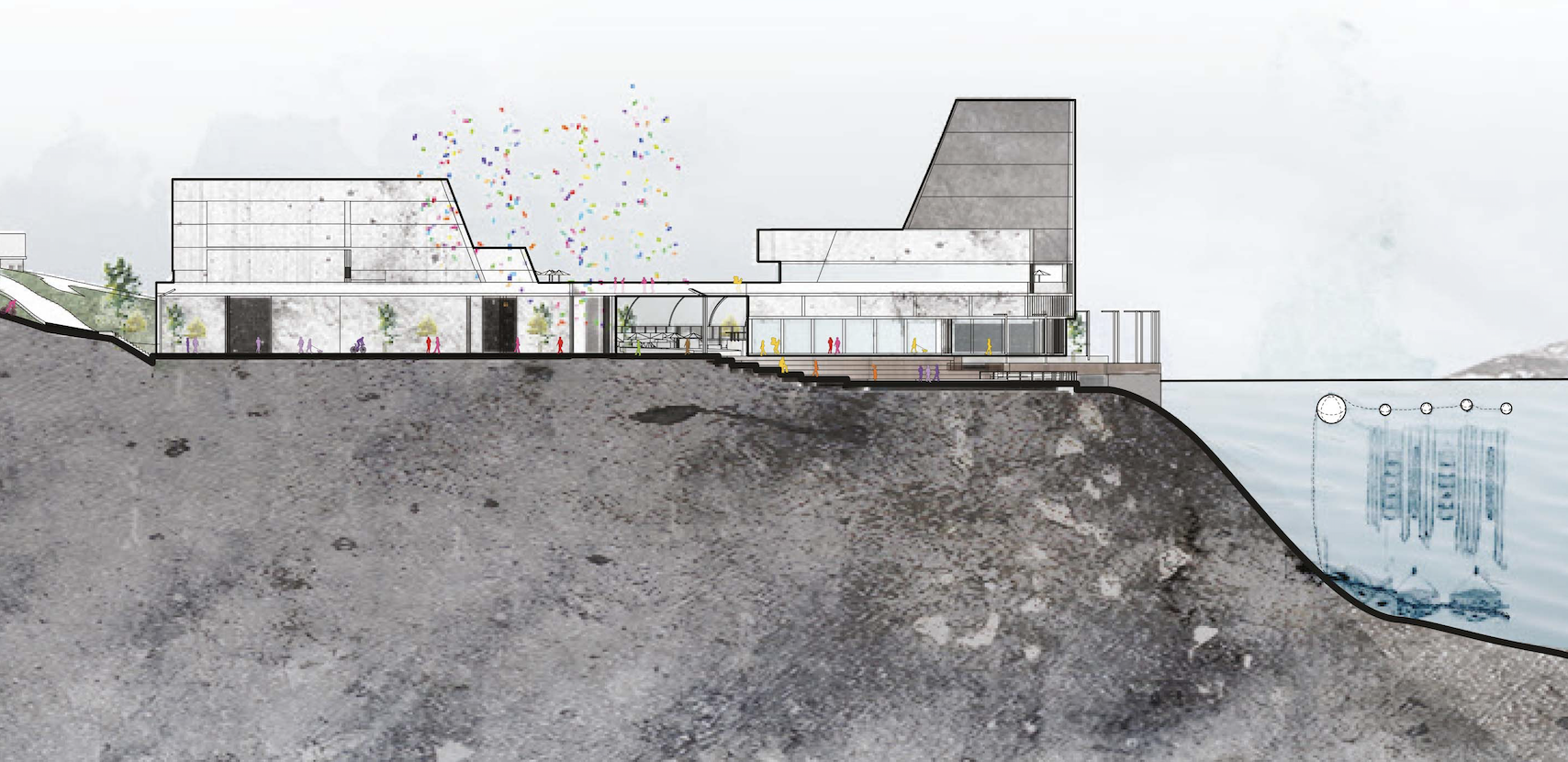
3. How did this issue and the questions raised by the site mutation meet?
By its common denominator – social networks. Although the site required physical structures to maintain the wide array of potentials in multiple industries such as agriculture, technology, tourism etc., we also added a plan to facilitate social structures within the physical ones. If we are to trust research in the field, productive high-tech facilities alone are not enough to cultivate certain innovations or as urban quality. Social and “soft” programming of buildings, encouraging increased tolerance and openness towards ideas and mutual understanding, are equally important as physical manifestations!
4. Have you treated this issue previously? What were the reference projects that inspired yours?
Our references are only but a few, but they were decisive. As we mentioned we all met each other during one brief semester at Longyearbyen in Svalbard (NO) while we were studying at AHO. There, the entire studio tackled every possible aspect of everyday Arctic urbanism. The studio gave us an understanding of the nature of activities in desolate Arctic areas. Wai and Eakapohb already worked together in a student project on harbor-front/tourism infrastructure project in Longyearbyen, another Arctic city. Tin on the other hand, had more literary references on fundamental social and human qualities of entrepreneurship, productive cities and regions throughout the world, mainly Manuel Castells. Here Castells observed the key success of long-term productive cities, was to have functional and operative relations between professionals. Without this, companies either left the area, or was not able to innovate.
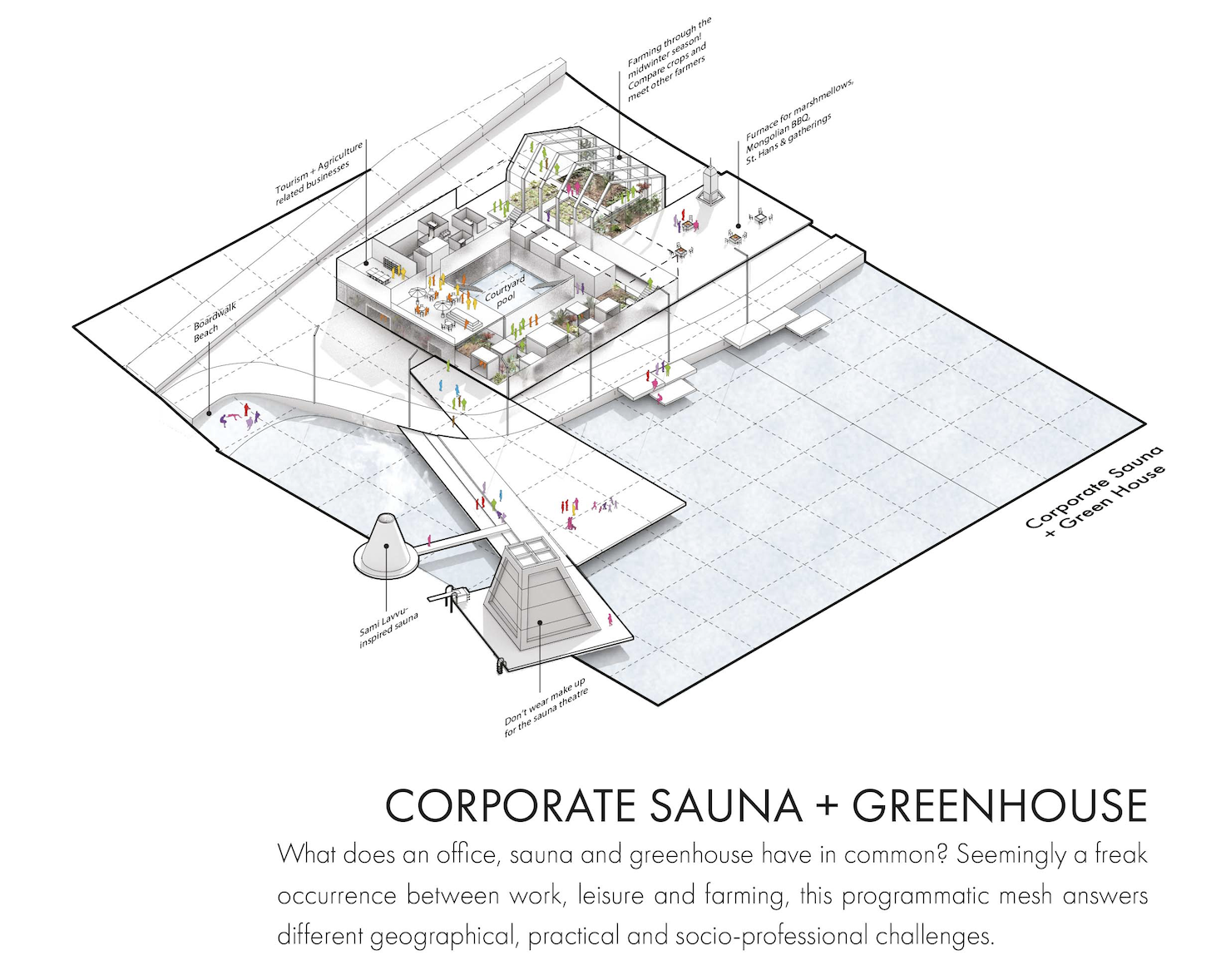
5. Urban-architectural projects like the ones in Europan can only be implemented together with the actors through a negotiated process and in time. How did you consider this issue in your project?
The social and soft programming as mentioned, also focused heavily on the afterlife of buildings as crucial for long-term success of the area. It means that this includes a wide array of actors (like the site’s issues and potentials), such as government officials, coworking and housing administration, shopkeepers, restaurateurs, workshop masters etc. and it was decisive in our proposal and has to work together towards a common goal for the long haul. To somehow start guaranteeing a lasting social dimension to places, us as architects and urbanists can no longer guarantee when we finish any given project.
6. Is it the first time you have been awarded a prize at Europan? How could this help you in your professional career?
Yes, this is both our first Europan award and participation. Even though we only received a special mention, Europan’s reputation and international reach make it easy to promote our work with a quality stamp without any further explanation, for existing and future clients, employers, professors, and professionals.

Related projects
-
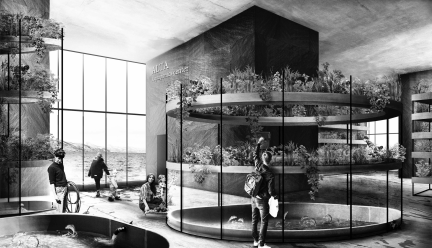
Tanca
We fill the big container with materials by improving industrial and artisanal production, ideas by…
-
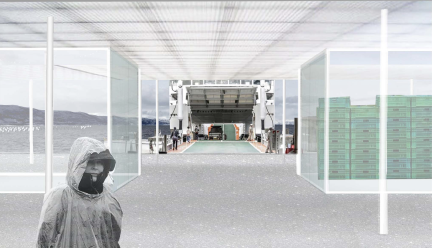
Hydro-Therapy
It’s time to focus back on the sea and find a symbiotic relationship between tourism and maritime…
-

BUSY BOSSE!
This entry examines the importance of human interactions and net- works that comes with a diverse…
